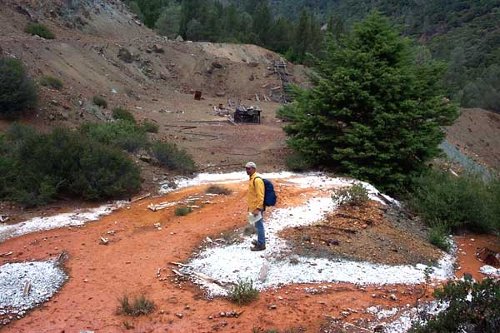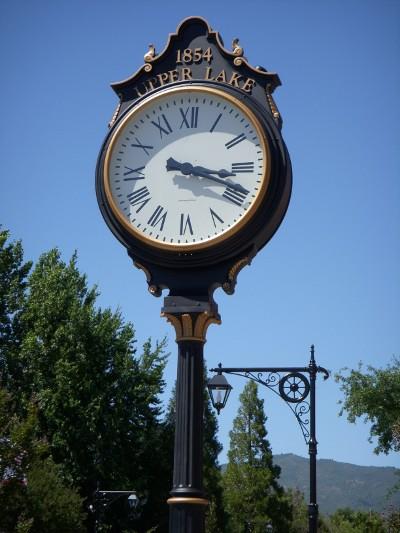SACRAMENTO – Secretary of State Debra Bowen this week announced the proposition numbers for the 10 measures set to appear on the Nov. 2 Statewide General Election ballot and invited interested Californians to submit arguments to be included in the Secretary’s Official Voter Information Guide.
The guide, also known as the ballot pamphlet, is mailed to every voting household in California.
The 10 propositions on the Nov. 2 ballot are listed below, along with the Legislative Counsel’s digest or the Attorney General’s title and summary.
Proposition 18: SBx7 2. Safe, Clean, and Reliable Drinking Water Supply Act of 2010.
Under existing law, various measures have been approved by the voters to provide funds for water supply and protection facilities and programs.
This bill would enact the Safe, Clean, and Reliable Drinking Water Supply Act of 2010, which, if approved by the voters, would authorize the issuance of bonds in the amount of $11,140,000,000 pursuant to the State General Obligation Bond Law to finance a safe drinking water and water supply reliability program.
The bill would provide for the submission of the bond act to the voters at the Nov. 2, 2010, statewide general election.
This bill would take effect only if SB 1 of the 2009-10 7th Extraordinary Session is enacted and becomes effective.
This bill would declare that it is to take effect immediately as an urgency statute.
Proposition 19: Changes California Law to Legalize Marijuana and Allow It to be Regulated and Taxed. Initiative Statute.
Allows people 21 years old or older to possess, cultivate or transport marijuana for personal use. Permits local governments to regulate and tax commercial production and sale of marijuana to people 21 years old or older.
Prohibits people from possessing marijuana on school grounds, using it in public, smoking it while minors are present, or providing it to anyone under 21 years old. Maintains current prohibitions against driving while impaired.
Summary of estimate by Legislative Analyst and Director of Finance of fiscal impact on state and local governments: Savings of up to several tens of millions of dollars annually to state and local governments on the costs of incarcerating and supervising certain marijuana offenders. Unknown but potentially major tax, fee, and benefit assessment revenues to state and local government related to the production and sale of marijuana products.
Proposition 20: Redistricting of Congressional Districts.
Initiative Constitutional Amendment. Removes elected representatives from the process of establishing congressional districts and transfers that authority to the recently-authorized 14-member redistricting commission.
Redistricting commission is comprised of five Democrats, five Republicans, and four voters registered with neither party.
Requires that any newly-proposed district lines be approved by nine commissioners including three Democrats, three Republicans, and three from neither party.
Summary of estimate by Legislative Analyst and Director of Finance of fiscal impact on state and local government: Probably no significant change in state redistricting costs.
Proposition 21: Establishes $18 Annual Vehicle License Surcharge to Help Fund State Parks and Wildlife Programs and Grants Free Admission to All State Parks to Surcharged Vehicles. Initiative Statute.
Establishes an $18 annual state vehicle license surcharge and grants free admission to all state parks to surcharged vehicles. Requires deposit of surcharge revenue in a new trust fund.
Requires that trust funds be used solely to operate, maintain and repair the state park system, and to protect wildlife and natural resources. Exempts commercial vehicles, trailers and trailer coaches from the surcharge.
Requires annual independent audit and review by citizen's oversight committee.
Summary of estimate by Legislative Analyst and Director of Finance of fiscal impact on state and local government: Increased state revenues of about $500 million annually from the imposition of a surcharge on the VLF to be used mainly to fund state parks and wildlife conservation programs.
Potential state savings of up to approximately $200 million annually to the extent that the VLF surcharge revenues were used to reduce support from the General Fund and other special funds for parks and wildlife conservation programs.
Reduction of about $50 million annually in state and local revenues from state park day-use fees. These revenue losses could potentially be offset by increases in other types of state park user fees and revenues.
Proposition 22: Prohibits the State from Taking Funds Used for Transportation or Local Government Projects and Services. Initiative Constitutional Amendment.
Prohibits the state from shifting, taking, borrowing, or restricting the use of tax revenues dedicated by law to fund local government services, community redevelopment projects, or transportation projects and services.
Prohibits the state from delaying the distribution of tax revenues for these purposes even when the Governor deems it necessary due to a severe state fiscal hardship.
Summary of estimate by Legislative Analyst and Director of Finance of fiscal impact on state and local government: Significant constraints on state authority over city, county, special district, and redevelopment agency funds.
As a result, higher and more stable local resources, potentially affecting billions of dollars in some years. Commensurate reductions in state resources, resulting in major decreases in state spending and/or increases in state revenues.
Proposition 23: Suspends Air Pollution Control Laws Requiring Major Polluters to Report and Reduce Greenhouse Gas Emissions that Cause Global Warming Until Unemployment Drops Below Specified Level for Full Year. Initiative Statute.
Suspends state laws requiring reduced greenhouse gas emissions that cause global warming, until California’s unemployment rate drops to 5.5 percent or less for four consecutive quarters.
Requires state to abandon implementation of comprehensive greenhouse-gas-reduction program that includes increased renewable energy and cleaner fuel requirements, and mandatory emission reporting and fee requirements for major polluters such as power plants and oil refineries, until suspension is lifted.
Summary of estimate by Legislative Analyst and Director of Finance of fiscal impact on state and local government: Potential positive, short-term impacts on state and local government revenues from the suspension of regulatory activity, with uncertain longer-run impacts.
Potential foregone state revenues from the auctioning of emission allowances by state government, by suspending the future implementation of cap-and-trade regulations.
Proposition 24: Repeals Recent Legislation that Would Allow Businesses to Carry Back Losses, Share Tax Credits, and Use a Sales-Based Income Calculation to Lower Taxable Income. Initiative Statute.
Repeals recent legislation that would allow businesses to shift operating losses to prior tax years and that would extend the period permitted to shift operating losses to future tax years.
Repeals recent legislation that would allow corporations to share tax credits with affiliated corporations. Repeals recent legislation that would allow multistate businesses to use a sales-based income calculation, rather than a combination property-, payroll- and sales-based income calculation.
Summary of estimate by Legislative Analyst and Director of Finance of fiscal impact on state and local government: Annual state revenue increase from business taxes of about $1.7 billion when fully phased in, beginning in 2011-12.
Proposition 25: Changes Legislative Vote Requirement to Pass a Budget from Two-Thirds to a Simple Majority. Retains Two-Thirds Vote Requirement for Taxes. Initiative Constitutional Amendment.
Changes the legislative vote requirement necessary to pass the state budget from two-thirds to a simple majority. Provides that if the Legislature fails to pass a budget bill by June 15, all members of the Legislature will permanently forfeit any reimbursement for salary and expenses for every day until the day the Legislature passes a budget bill.
Summary of estimate by Legislative Analyst and Director of Finance of fiscal impact on state and local government: Unknown changes in the content of the state budget from lowering the legislative vote requirement for passage.
Fiscal impact would depend on the composition and actions of future Legislatures. Minor reduction in state costs related to compensation of legislators in years when the budget bill is passed after June 15.
Proposition 26: Increases Legislative Vote Requirement to Two-Thirds for State Levies and Charges. Imposes Additional Requirement for Voters to Approve Local Levies and Charges with Limited Exceptions. Initiative Constitutional Amendment.
Increases legislative vote requirement to two-thirds for state levies and charges, with limited exceptions, and for certain taxes currently subject to majority vote. Changes Constitution to require voters to approve, either by two-thirds or majority, local levies and charges with limited exceptions.
Summary of estimate by Legislative Analyst and Director of Finance of fiscal impact on state and local government: Potentially major decrease in state and local revenues and spending, depending upon future actions of the Legislature, local governing bodies, and local voters.
Proposition 27: Eliminates State Commission on Redistricting. Consolidates Authority for Redistricting with Elected Representatives. Initiative Constitutional Amendment and Statute.
Eliminates 14-member redistricting commission selected from applicant pool picked by government auditors. Consolidates authority for establishing state Assembly, Senate, and Board of Equalization district boundaries with elected state representatives responsible for drawing congressional districts.
Reduces budget, and imposes limit on amount Legislature may spend, for redistricting. Provides that voters will have the authority to reject district boundary maps approved by the Legislature. Requires populations of all districts for the same office to be exactly the same.
Summary of estimate by Legislative Analyst and Director of Finance of fiscal impact on state and local government: Likely decrease in state redistricting costs totaling several million dollars every 10 years.
People may submit arguments for or against any measure. Arguments selected for the Official Voter Information Guide will be on public display between July 20 and Aug. 9.
If multiple arguments are submitted for one proposition, state law gives first priority to arguments written by legislators in the case of a legislative measure, and first priority to arguments written by the proponents of an initiative in the case of an initiative measure.
Subsequent priority for all measures goes to bona fide citizen associations and then to individuals. No more than three signers are allowed to appear with an argument or rebuttal to an argument.
Ballot arguments cannot exceed 500 words and rebuttals to ballot arguments cannot exceed 250 words. All submissions should be typed and double-spaced.
They may be hand-delivered to the Secretary of State’s Elections Division at 1500 11th Street, 5th Floor, Sacramento, California 95814 or faxed to 916-653-3214. If faxed, the original copies must be received within 72 hours.
The deadline to submit ballot arguments is July 6 by 5 p.m. and the deadline to submit rebuttals to the ballot arguments is July 15 by 5 p.m.
For more information on ballot measures and the Nov. 2 election, go to www.sos.ca.gov/elections/2010-elections.
To view past state voter guides, go to www.sos.ca.gov/elections/ballot-measures/voter-information-guides.htm.
Follow Lake County News on Twitter at http://twitter.com/LakeCoNews and on Facebook at http://www.facebook.com/pages/Lake-County-News/143156775604?ref=mf .

 How to resolve AdBlock issue?
How to resolve AdBlock issue? 







